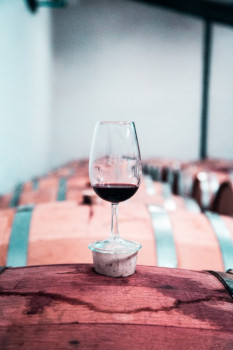THE ART OF SPIRIT CUT IN POT STILL DISTILLATION



Using pot stills is a traditional method of distilling spirits, particularly whiskey. This process involves several stages, one of which is the spirit cut, where the master distiller commits to the specific characteristics that will define the new-make spirit.
The process of spirit cut begins with the first distillation, which produces "low wines" with an alcohol content of around 20-25 percent ABV. These low wines contain a broad range of flavors, including fruit, cereal, and biscuit notes, as well as phenolic compounds in the case of a peated style. During the second distillation, the alcohol content of the distillate rises to a peak of around 80-85 percent ABV, before gradually decreasing. As the alcohol content changes, so does the character of the spirit, with lighter and more elegant fruit flavors appearing at higher alcohol strengths, and progressively richer and fuller-bodied notes such as cereal emerging as the strength decreases.
The second distillation process consists of three distinct phases. Initially, the "heads" or "foreshots" are collected separately since they are too impure. Subsequently, once the spirit reaches the desirable characteristics, the "spirit cut" is initiated, where the newly distilled spirit is gathered separately. As the distillation process continues, the "spirit cut" is ceased when the distillate begins to exhibit unfavorable qualities, referred to as the "feints" or "tails." The precise time for the transition from collecting "heads" to initiating the "spirit cut" and from ending the "spirit cut" to gathering "tails" differs from distillery to distillery, depending on their individual house style.
Determining when to make the cut is not always straightforward. If there is a clear change in the character of the spirit, with desirable notes ending and undesirable ones beginning, it is easy to make the cut. However, there is often an "overlapping phase" when the spirit contains both desirable and undesirable characteristics, making it necessary to compromise to gain as many desirable elements as possible with a minimum of the undesirable.
A typical spirit cut begins around 75 percent ABV and ends around 65 percent, resulting in a new-make spirit at 70 percent ABV. However, the alcohol content is merely a guideline, as the development of the spirit is variable and continually monitored to ensure that each cut is based on the characteristics of the distillate.
When distilling a peated spirit, the progression of flavors is not as clear-cut as in non-peated spirits. Instead of light to medium to rich notes, smokey and medicinal notes lead on to drier, earthier, and more complex, smoky bacon characteristics. Extending the spirit cut to capture more complex phenolics must be balanced against these being accompanied by more feisty and oily notes, making it a trade-off between the two.
It is important to note that even a 1 percent ABV increase in the spirit cut can change the character of the new-make spirit significantly. Therefore, it is never a matter of simply increasing the range of flavors; what matters is how the characteristics interact with one another.

In conclusion, the process of spirit cut is a crucial stage in the production of spirits using pot stills. It is a delicate process that requires a master distiller's knowledge and experience to determine the right moment to make the cut. The characteristics of the distillate must be carefully monitored, and the decision to make the cut must be made based on the specific house style and desired flavors. With the right expertise and attention to detail, pot stills can produce spirits with a unique character and flavor profile that cannot be replicated through any other distillation method.
Source: The Whisky Dictionary: an A-Z of Whisky, from history & heritage to-distilling & drinking



